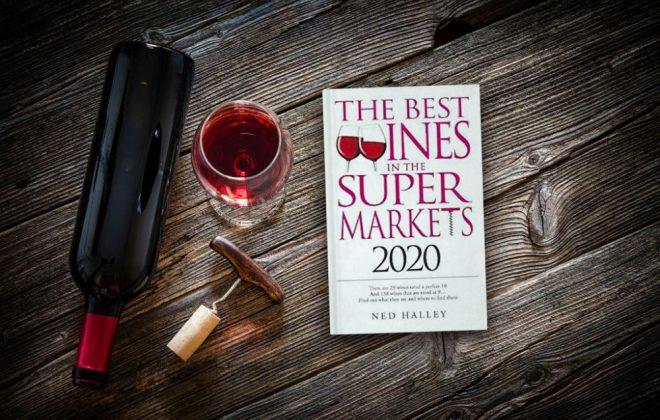Rich In TIme by Christoforos Chionis Koufakos
Buy back your time just in time!
A simple easy reading book for personal and financial development.
If you're fed up with feeling like you're just lining someone else's pockets with your hard work and want to grab control of your own financial future, this book is exactly what you need. It's written in a straightforward, easy-to-understand way, teaching you the ins and outs of the capitalist system and how to make it work for you instead of against you.
The book doesn't just stop at explaining the system; it also prepares you for the tough economic times ahead and helps you change how you view the world and handle your emotions, all through examples that you'll find super relatable and easy to grasp.
AmazonExcerpt from Rich In TIme © Copyright 2023 Christoforos Chionis Koufakos
CHAPTER 1
How the value of a good is determined
An important step towards your financial independence and success is based on learning and mastering the system that the world uses and has relied on to organize its economic system.
The importance of learning this system cannot be easily explained in words, so I will use a simple example of the popular poker game. The decisive factor for a player’s victory apart from luck and skill is a good knowledge of the rules such as which combination of cards is stronger than the other. The economic system that exists at least in Greece is the capitalist system. In order to analyse this system we must start by defining what exactly determines the value of a good.
What is the value of a good?
It is initially divided into two categories: the value defined by the use of the good and the value defined by its exchange value. Usually a good that has a high usability has a low exchange value, for example water, while its use is valuable its exchange value is low. On the other hand, diamond has great exchange value but little usability.
Therefore, in the capitalist system a part of the value of the good is held by its exchange value. This is because in order to be able to survive as a species and to progress, each person had to develop his own skills or talents and exchange the surplus commodity from his labour left over
from private use for some other surplus from someone else’s merchandise. For example, a baker will exchange the leftover bread after he has consumed as much bread as he and his family can eat. Something that is not observed in animals, although a cheetah is much faster than a giraffe and a giraffe much taller than a cheetah will never cooperate to cover each other’s weakness.
Supply and demand
So, depending on the season, when there is a shortage of meat supply with the demand for meat remaining constant, the exchange value goes up while the usability value remains the same resulting in a rise in the price of meat. On the contrary, the price of wheat can go down due to a surplus, with its usability value remaining unchanged and its exchange value falling, the demand always remaining constant.
So it is understood that the utility of a good has an intrinsic value, however the exchange value changes resulting in a change in the total price of the good. The change in exchange value depends on the supply-demand relationship for a particular good. There is inelastic demand, if the supply remains the same and the price of the good increases, the demand will remain more or less the same with a slight decrease. Usually the goods in which this occurs are essential for human survival such as bread or metals. Whilst there is also elastic demand, if supply again remains the same, an increase in the price of the good has a dramatic decrease in demand. These goods are luxury goods such as a mobile phone or jewellery for example.
Market types
Now, if demand remains constant, then for the price of a good to change there must be a change in its supply. There are four categories, the first being full competition in which the number of firms in the industry is large with the sale of similar products and great ease of entry of new firms into the industry. The selling price of the products is determined exclusively by the consumers and is the same for all sellers.
On the other hand, monopolistic competition has fewer firms than full competition with a slightly differentiated product, so there is a slight power in setting the selling price of the product beyond the consumer due to the smaller supply of the product.
Then the oligopoly is distinguished, in which firms are much more reduced than in monopolistic competition, resulting in great power in price determination by sellers rather than consumers, regardless always of homogeneity or not of the product. The small number of firms in this particular type of supply has to do with the difficulty of introducing new firms due to natural or artificial barriers, so that even if, with a decrease in supply, the profits of firms increase as a result of the price increase, it becomes impossible to introduce new firms that would increase supply and thus cause the price to fall in the future.
Finally we have the monopoly where there is one company that sets the price and it is impossible for other companies to enter, so the consumer has no bargaining power or influence on the price of the product.
This is the same way employers negotiate wages with workers. However, the small amount of employers versus
employees gives them a serious advantage in negotiating and setting the final wage. So if the demand for labour decreases or the supply for labour increases, then workers’ wages will fall, otherwise an increase in the demand for labour or a decrease of supply for labour will increase workers’ wages.
The price fluctuation
The price of goods is therefore constantly fluctuating from the lowest possible price that a company can produce a particular product by making back the initial capital invested with a small profit. The highest price is usually determined by the capital invested and the maximum profit that exists in the particular market. It fluctuates because at the lowest price the capital leaves the particular market looking for more profit, so there are less number of firms, the supply decreases with the demand remaining the same, so we have a rise in price. Conversely at the highest price it attracts such a large number of firms by flooding the market with a large quantity without a change in demand, so there is a large supply thus reducing the price of the good and profits accordingly to the usual levels. With the result that eventually the supply of the good is adjusted to be usually a little less than demand and the price somewhere in the middle.
At the lower price, therefore, in addition to the profit, the entrepreneur looks for the depreciation of the costs incurred in the capital invested. The costs include the rent of the premises, the materials used in the creation of the product and the wages of the workers. So the entrepreneur derives the profit of his capital by the workers, who produce more than they ask, since the rent with the materials used cost as much as the sale did to depreciate the capital.
My profession is online marketing and development (10+ years experience), check my latest mobile app called Upcoming or my Chrome extensions for ChatGPT. But my real passion is reading books both fiction and non-fiction. I have several favorite authors like James Redfield or Daniel Keyes. If I read a book I always want to find the best part of it, every book has its unique value.







